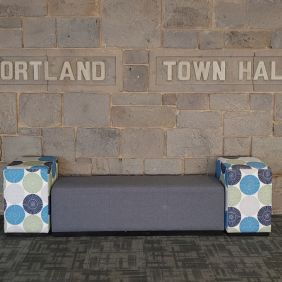The distributed work model is a type of work arrangement where employees are not physically present in the same office. Instead, they are located in different locations, often working from home or from another remote location. This type of work arrangement has become increasingly popular in recent years, as advances in technology have made it easier for people to stay connected and collaborate remotely.
There are a number of benefits to the distributed work model, including increased flexibility and productivity, as well as decreased overhead costs. However, there are also some challenges that come with this type of work arrangement, such as communication difficulties and a lack of face-to-face interaction.
Benefits of The Distributed Work Model
There are a number of benefits to the distributed work model, including:
- Increased Flexibility: One of the main benefits of the distributed work model is that it offers increased flexibility. This type of work arrangement allows employees to work from home or from another remote location, which can be beneficial for those with family or other commitments that make it difficult to be present in an office.
- Increased Productivity: The distributed work model can also lead to increased productivity, as employees are often able to work more flexible hours and have more control over their schedules. This can allow them to better manage their time and get more work done.
- Decreased Overhead Costs: The distributed work model can also help to decrease overhead costs for businesses. This is because there is no need to maintain a physical office space, which can be expensive.
- Improved Morale: The distributed work model can also improve morale, as employees often feel more empowered and have a greater sense of control over their work. This can lead to a more positive work environment.
Challenges of Distributed Work Program
There are also some challenges that come with the distributed work model, including:
- Communication Difficulties: One of the main challenges of the distributed work model is communication difficulties. This is because it can be difficult to stay in touch with employees who are not physically present in the same office. There may be a need to rely heavily on email, instant messaging, and other forms of online communication, which can be less personal than face-to-face interaction.
- Lack of Face-to-Face Interaction: Another challenge of the distributed work model is the lack of face-to-face interaction. This can make it difficult to build relationships with co-workers and can lead to feelings of isolation.
- Difficulty Managing Employees: The distributed work model can also make it more difficult to manage employees, as there is less direct supervision. This can be a challenge for managers who are not used to this type of work arrangement.
- Potential Security Risks: There are also potential security risks associated with the distributed work model, as businesses may be storing sensitive data on remote servers. This data may be more vulnerable to hacking or other security breaches.
- Requires Good Planning and Organization: The distributed work model can also require good planning and organization to be successful. This is because there needs to be a clear plan for how work will be assigned and completed when employees are located in different places.
The distributed work model can offer a number of benefits, but it is important to be aware of the challenges that come with this type of work arrangement. Businesses should carefully consider whether the distributed work model is right for them before implementing it.
How to Manage a Distributed Workforce
When you’re working on a distributed team, there are a few things you can do to help ensure success:
- Schedule regular check-ins: One of the most important things you can do when working on a distributed team is to schedule regular check-ins. This will help to ensure that everyone is on the same page and that communication is flowing smoothly.
- Use project management tools: Another helpful tip is to use project management tools, such as Trello or Asana, to help keep track of tasks and deadlines. This can be especially helpful when working on larger projects.
- Set clear expectations: It’s also important to set clear expectations for employees when working on a distributed team. This means being clear about deadlines, deliverables, and what is expected of each team member.
- Encourage collaboration: Finally, it’s important to encourage collaboration among team members. This can be done by using collaborative tools, such as Google Docs, and by having regular team meetings.
What Office Furniture Do I Need for Distributed Work Model?
If you’re working in a distributed office, there are a few pieces of furniture you’ll need to have in order to be successful:
- A comfortable chair: One of the most important pieces of furniture you’ll need for a distributed office is a comfortable chair. This is because you’ll be spending a lot of time sitting at your desk, so it’s important to have a chair that supports your back and gives you enough space to move around.
- A standing desk: Another piece of furniture you’ll need is a standing desk. This is because it’s important to be able to stand up and stretch your legs every few hours. A standing desk will also help to reduce back pain.
- A printer: You’ll also need a printer in your distributed office so that you can print out documents and other materials. It’s important to choose a printer that is compatible with your computer and has all the features you need.
- A whiteboard: Finally, you’ll need a whiteboard in your distributed office so that you can brainstorm ideas and keep track of tasks. A whiteboard is also a great way to communicate with other team members.
Final Word
With these few pointers, you can now understand and manage a distributed workforce with ease. Just remember to keep communication clear, use project management tools, encourage collaboration, and have the right office furniture. Your team will be able to work together effectively in no time!









